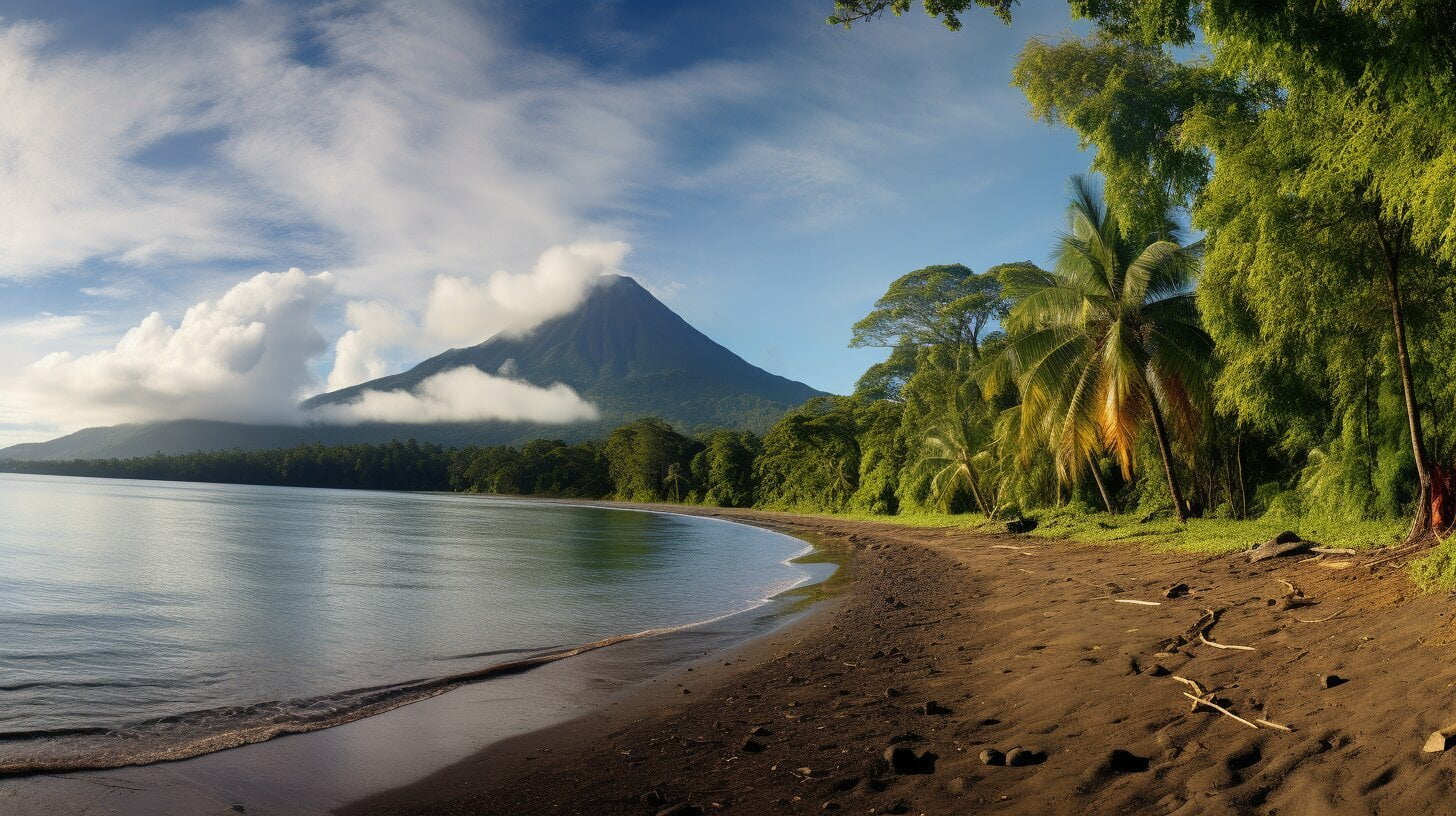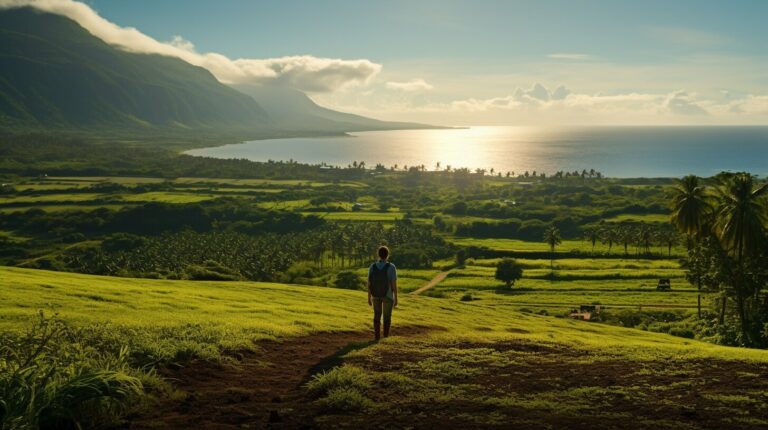Unveiling Big Island’s Weather Wonders 🌴
Big Island is one of Hawaii’s most popular travel destinations, known for its breathtaking landscapes, adventure activities, and laid-back island vibes. However, to make the most of your trip, it’s crucial to understand Big Island weather patterns. From tropical beaches to snow-capped mountains, Big Island boasts a diverse range of microclimates that can significantly impact your experience. In this guide, we’ll provide an in-depth overview of Big Island weather, climate, and the best times to visit.
Key Takeaways:
- Big Island weather patterns are diverse and vary across the island due to its complex topography and geographical location.
- Understanding Big Island climate and its unique microclimates can help visitors plan their trip and prepare for changing weather conditions.
- Weather forecasts play a significant role in ensuring a safe and enjoyable trip to Big Island.
Understanding Big Island Weather Patterns
Big Island’s weather patterns are unique due to its diverse microclimates and the influence of various factors. The island’s weather can change drastically from one location to another, with certain areas experiencing rain while others are sunny and dry.
One of the key factors that shape Big Island’s weather is its position in the middle of the Pacific Ocean, which exposes it to different weather systems and influences. The trade winds, which blow from the northeast, bring steady rain to the island’s eastern side, while the leeward side is often dry and sunny.
Big Island’s varied topography also plays a significant role in its weather patterns. The island boasts a range of elevations, from sea level to over 13,000 feet, creating different climate zones. The lower elevations are typically hot and humid, while the higher elevations can be cooler and drier.
Unique Microclimates
Big Island has numerous microclimates, which refer to small areas with distinct weather conditions that differ from the surrounding region. Some of the island’s microclimates include:
| Microclimate | Location | Characteristics |
|---|---|---|
| Kohala Coast | Northwest | Sunny, dry, and hot year-round |
| Hilo | East | Wet and humid due to trade winds |
| Mauna Kea Summit | Central | Cool and dry, with occasional snow in winter |
| Kona | West | Sunny and dry, with occasional rainfall |
Even small changes in elevation can result in different weather patterns, with cooler temperatures and more rainfall at higher elevations. Visitors to Big Island should be prepared for varying weather conditions, depending on their location and elevation.
Big Island Climate: From Tropical to Alpine
Big Island’s diverse landscapes are mirrored in its climate, which ranges from tropical to alpine. The island’s varying elevation and geography create distinct climate zones, each with its temperature and precipitation patterns.
The coastal areas of Big Island are characterized by a tropical climate, with warm temperatures year-round and abundant rainfall. Hilo, on the eastern coast, is the wettest city in the United States, with an average of 126 inches of rainfall annually.
The upland areas of Big Island experience a subtropical climate, with cooler temperatures and drier conditions. Kailua Kona, on the western coast, is known for its sunny and dry weather, with an average of 18 inches of rainfall yearly.
The summit of Mauna Kea, the tallest mountain on Big Island, has an alpine climate, with freezing temperatures and snow during winter months. In contrast, its base experiences a desert climate, with minimal rainfall and hot temperatures year-round.
The Influence of Trade Winds
Trade winds are winds that blow predominantly from the northeast, and their influence is a significant factor in Big Island’s weather. These winds bring moisture to the island, creating the rainy conditions in the east and keeping the west dry. Additionally, the trade winds keep temperatures relatively mild and consistent year-round, making Big Island a popular travel destination.
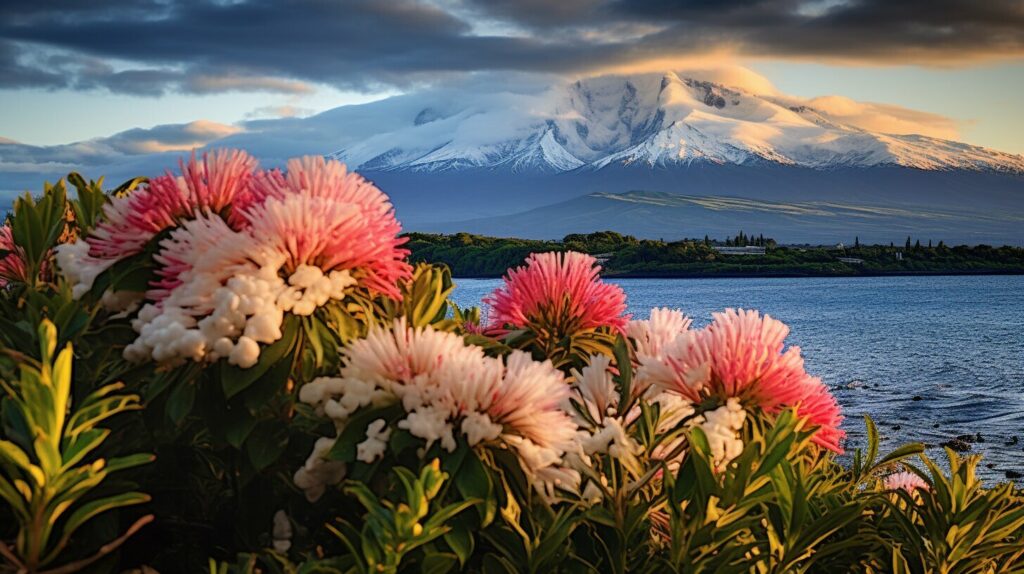
When planning a trip to Big Island, consider the varying climate zones and their corresponding weather conditions. Dressing in layers is recommended, as temperatures can vary significantly depending on location and time of day.
Rainfall in Paradise: Big Island’s Wet and Dry Seasons
Big Island’s rainfall patterns are as diverse as its landscapes. The eastern side of the island is known for its lush rainforests, while the western side is comparatively drier and sunnier. The Big Island has two main seasons: the dry season, also known as Kau, which lasts from May to October, and the wet season, or Hooilo, which lasts from November to April.
During the dry season, visitors can expect mostly clear blue skies and sunny days, with occasional brief showers and cooler temperatures at night. It is considered the peak tourist season due to the comfortable weather, optimal for outdoor activities like hiking, snorkeling, and beach-hopping.
The wet season, on the other hand, brings more frequent downpours, especially on the eastern side of the island. Visitors should come prepared with rain gear and plan indoor activities for rainy days. However, the wet season also means more waterfalls and blooming flowers, and it’s an ideal time for surfing and other water sports.
| Season | Average Rainfall |
|---|---|
| Dry Season (May-Oct) | 1.5-2.5 inches per month |
| Wet Season (Nov-Apr) | 3-5 inches per month |
Source: Go Hawaii
If you’re looking to avoid the crowds and experience Big Island’s natural beauty in a different way, you may want to consider visiting during the shoulder seasons, which fall in April-May and September-November. These seasons can offer pleasant weather and fewer tourists, but still provide a good balance of rain and sunshine.
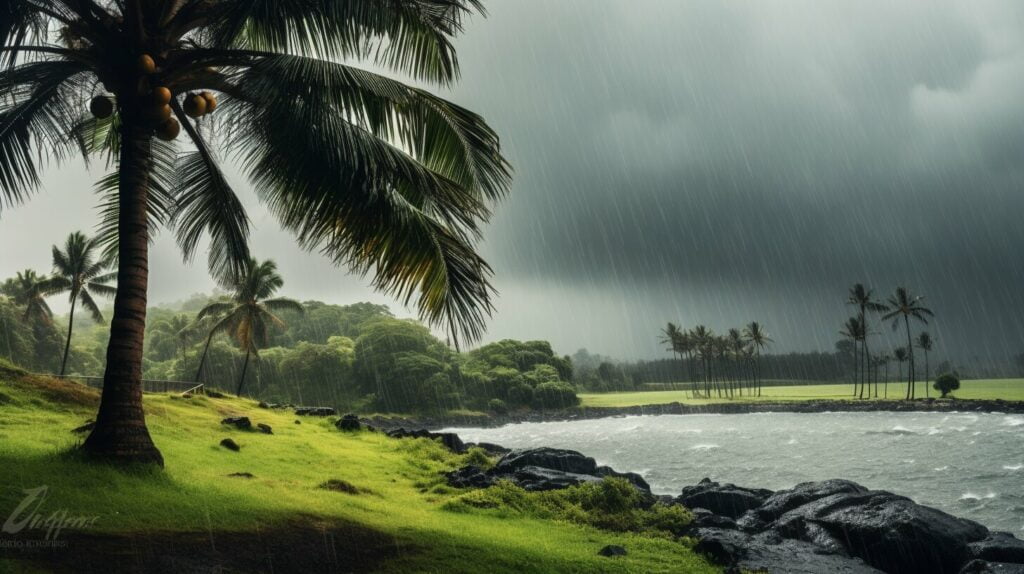
Weather Forecast for Big Island: Staying Prepared
When planning a trip to Big Island, it’s essential to keep a close eye on the weather forecast. The island’s diverse microclimates and weather patterns can change quickly, so staying prepared is key to a safe and enjoyable visit.
There are numerous resources available for weather updates, including local news outlets, smartphone apps, and NOAA’s National Weather Service. When checking the forecast, pay attention to factors such as temperature, wind speed, precipitation, and the UV index.
It’s also important to pack accordingly, bringing sunscreen, hats, and comfortable clothing for warm weather, as well as rain gear and warm layers for cooler temperatures or rainy days.
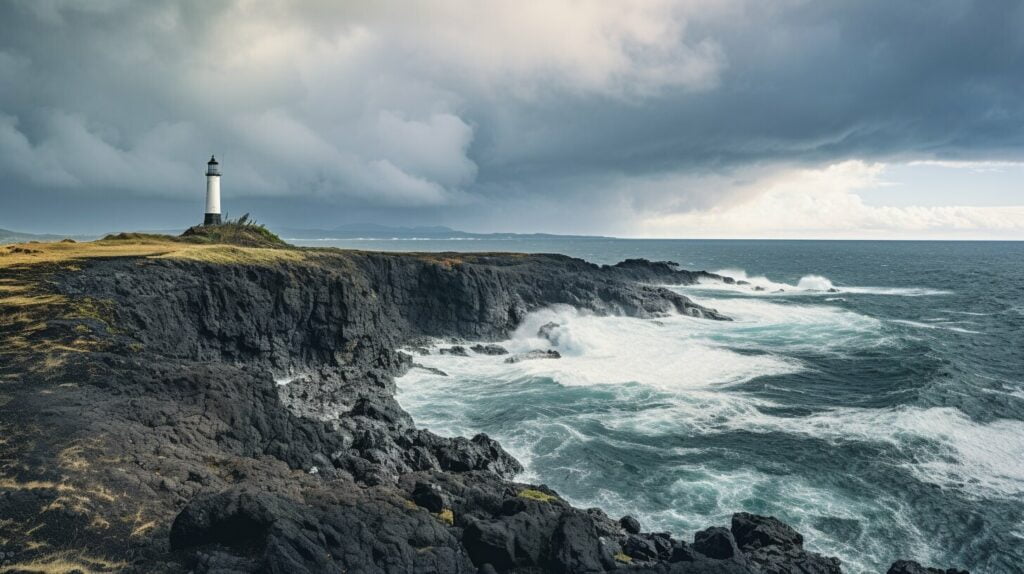
If you encounter extreme weather conditions during your visit, such as a hurricane or flash flooding, it’s crucial to follow safety guidelines and seek shelter immediately. Stay informed and be aware of your surroundings to avoid any potential hazards.
By staying prepared and keeping the weather forecast in mind, you can make the most of your trip to Big Island and enjoy all the unique outdoor activities and breathtaking landscapes that this beautiful island has to offer.
Top Weather-Related Activities on Big Island
Big Island’s diverse weather patterns offer a multitude of opportunities for outdoor adventures. Whether it’s surfing, hiking, stargazing, or exploring the island’s unique landscapes, there’s something for everyone.
Surfing and Water Activities
Big Island’s coastline boasts some of the best surfing destinations in Hawaii. From the world-renowned Banzai Pipeline to the calmer waters of Kahaluu Bay, surfers of all levels can catch some waves. For those who prefer calmer waters, kayaking, stand-up paddleboarding, and snorkeling are also popular water activities.
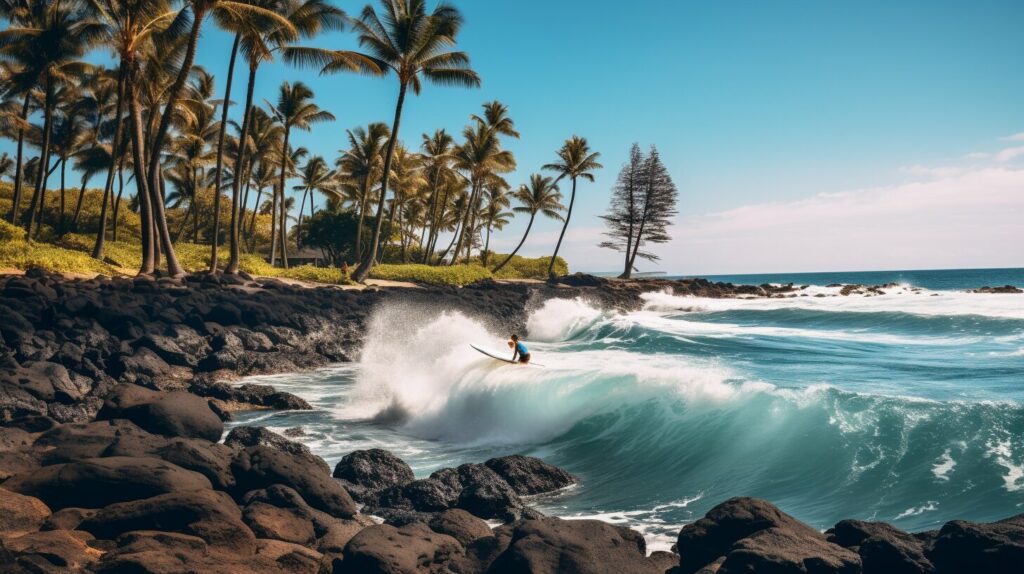
Exploring the Volcanoes
The active volcanoes on Big Island attract visitors from around the world. Volcanoes National Park offers a variety of hiking trails that allow visitors to witness the power and beauty of Mother Nature up close. The park also features scenic drives, lava tubes, and stunning views of the island’s diverse landscapes.
Stargazing
With its clear skies and remote location, Big Island offers some of the best stargazing opportunities in the world. The summit of Mauna Kea, one of the island’s tallest peaks, is home to several world-class observatories. Visitors can also participate in guided stargazing tours and learn about the cultural significance of the stars in Hawaiian mythology.
Hiking and Nature Walks
Big Island is a hiker’s paradise, offering a range of scenic trails that cater to all levels of experience. From the lush rainforests of Hilo to the barren lava fields of Kona, visitors can explore the island’s diverse microclimates and encounter a variety of endemic flora and fauna. Guided hikes and nature walks are also available for those who prefer a more structured experience.
Weather Considerations
While Big Island’s weather is generally mild and predictable, visitors should still be prepared for sudden changes. It’s important to bring proper gear, such as rain jackets and hiking shoes, and to check weather forecasts before embarking on any outdoor adventures. It’s also recommended to stay on designated trails and to avoid hiking during extreme weather conditions.
Weather and Safety: Tips for a Smooth Trip
While visiting Big Island, it’s essential to be prepared for varying weather conditions. Here are some tips to help you stay safe and make the most of your trip:
- Check the weather forecast: Before embarking on any outdoor activities, be sure to check the weather forecast for the area you’ll be visiting. Keep in mind that weather conditions can vary greatly across different parts of the island.
- Stay hydrated: The hot and humid conditions on Big Island can quickly lead to dehydration. Be sure to drink plenty of water throughout the day, even if you don’t feel thirsty.
- Beware of flash floods: Heavy rainfall can cause flash flooding in certain areas of the island. Avoid hiking or driving through flooded areas, and be prepared to quickly move to higher ground if necessary.
- Protect yourself from the sun: The tropical climate on Big Island means that the sun’s rays can be intense, even on cloudy days. Wear a hat, sunglasses, and sunscreen with at least SPF 30 to protect your skin from harmful UV rays.
- Respect the ocean: The waters around Big Island can be treacherous, with strong currents and waves. Only swim in designated areas, and never turn your back on the ocean.
- Be aware of volcanic activity: Big Island is home to several active volcanoes, which can sometimes cause dangerous conditions such as lava flows or toxic gas emissions. Check with local authorities for any alerts or warnings before visiting these areas.
By following these tips and staying aware of the weather and your surroundings, you can ensure a safe and enjoyable trip to Big Island.
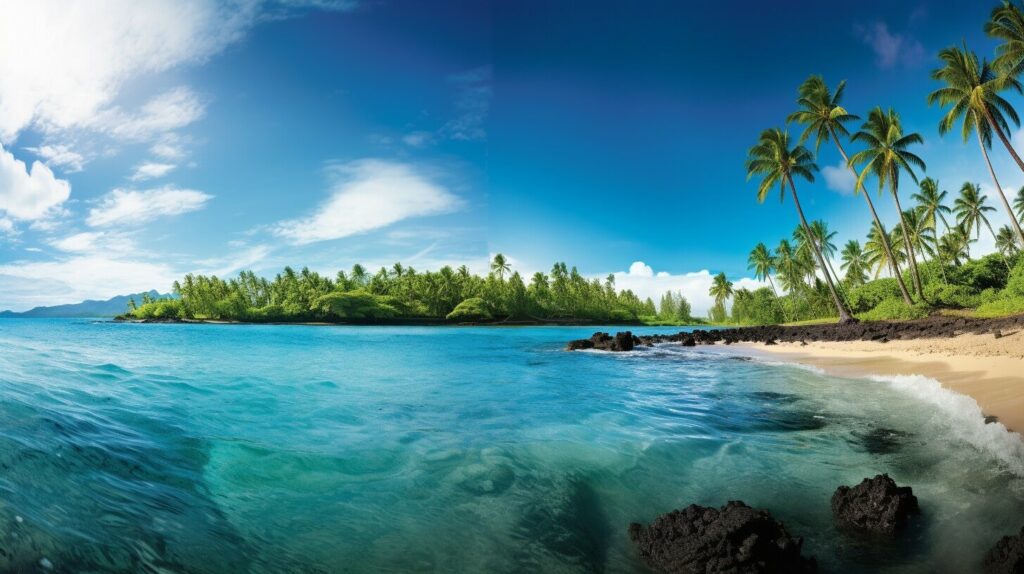
Conclusion
Big Island’s weather can be unpredictable, but it doesn’t have to ruin your trip. By understanding the island’s unique weather patterns and microclimates, visitors can plan their activities and make the most of their time on the island.
It’s important to stay updated on weather conditions before embarking on outdoor adventures, and to be prepared for sudden changes in temperature or rainfall. Remember to pack appropriate clothing and gear, and to take necessary precautions to stay safe during extreme weather events.
But don’t let the weather scare you away from experiencing all that Big Island has to offer. From surfing to stargazing, there are plenty of activities to enjoy in any type of weather. With some planning and flexibility, your trip to Big Island is sure to be a memorable one.

